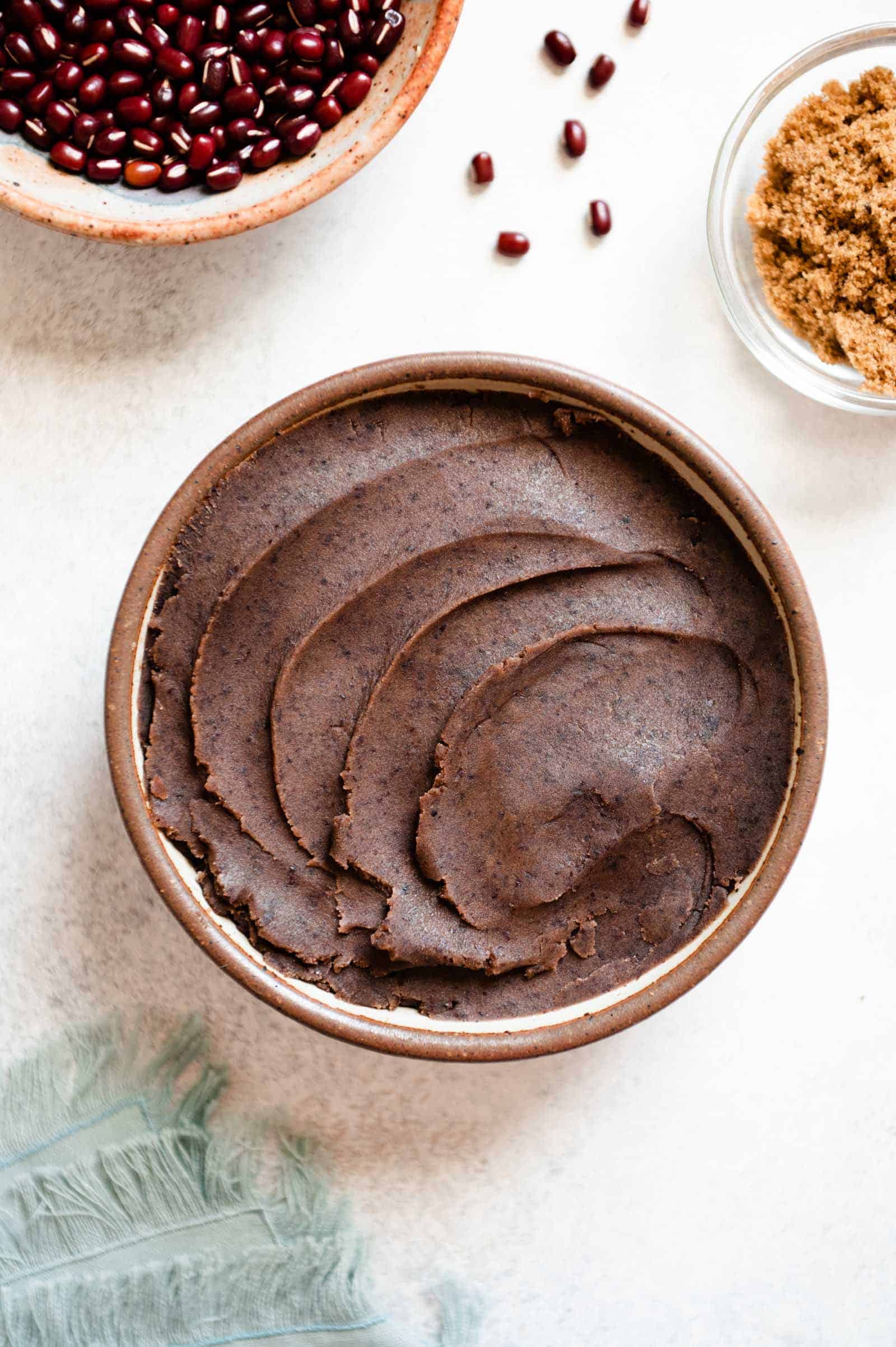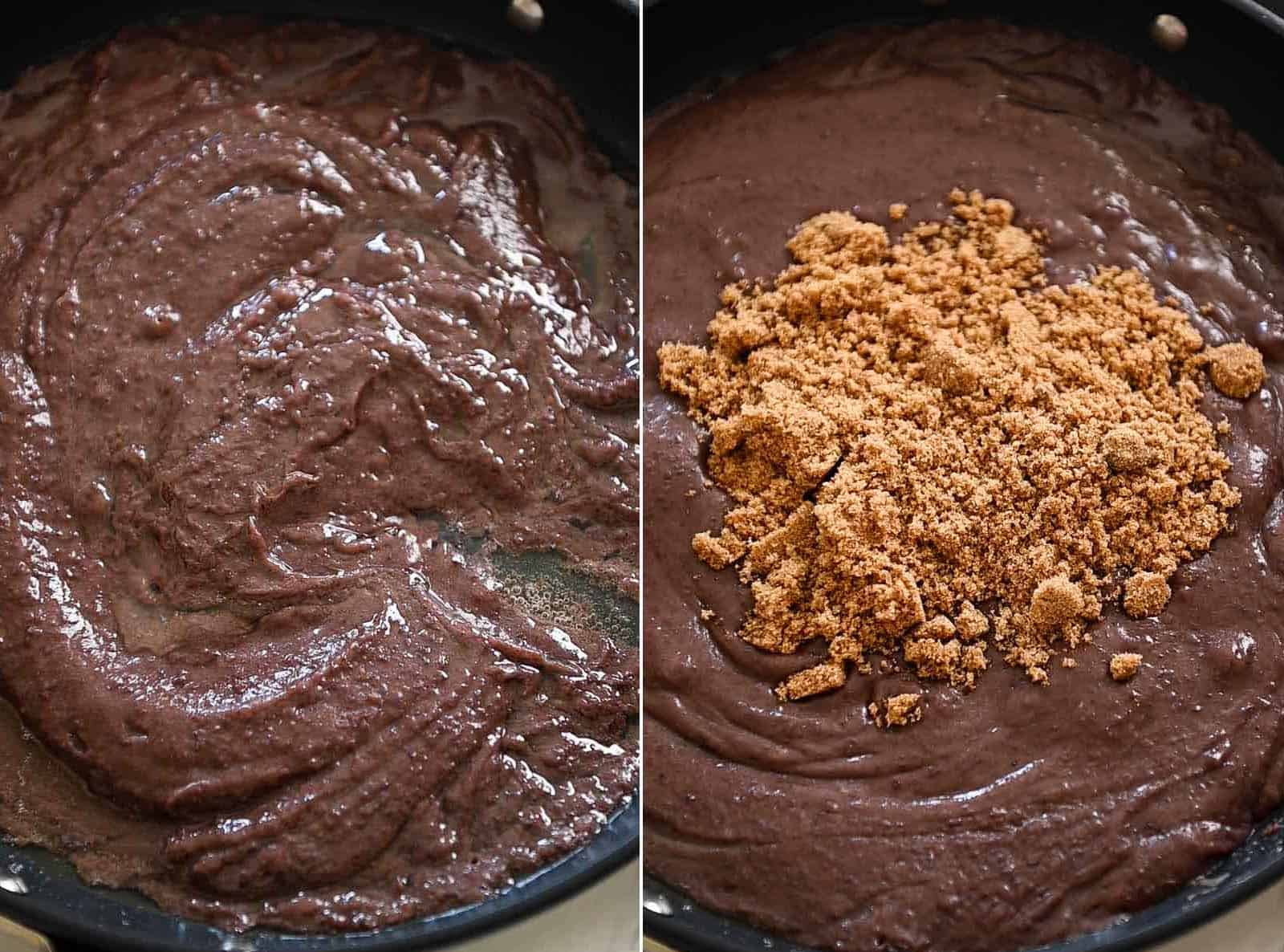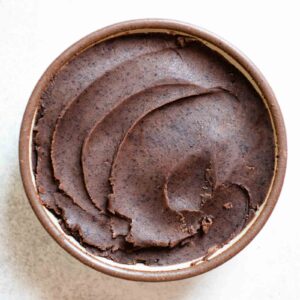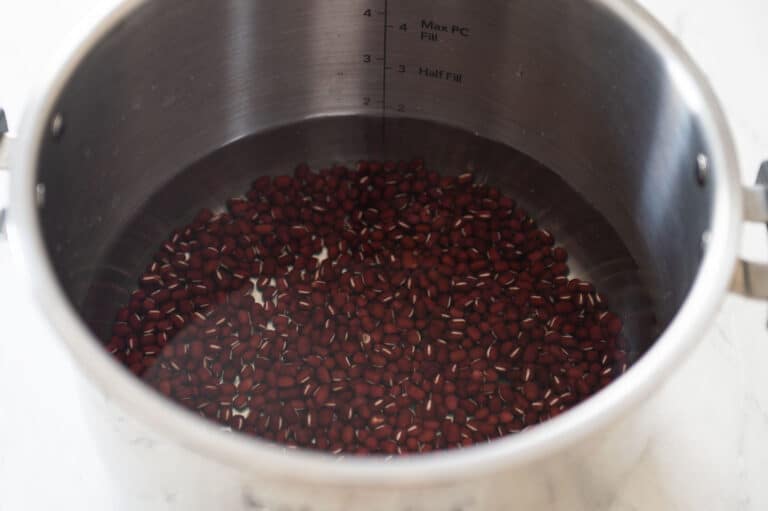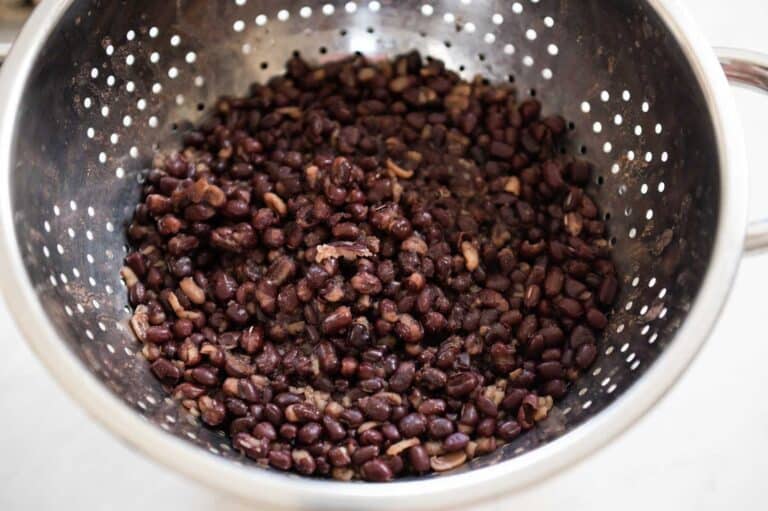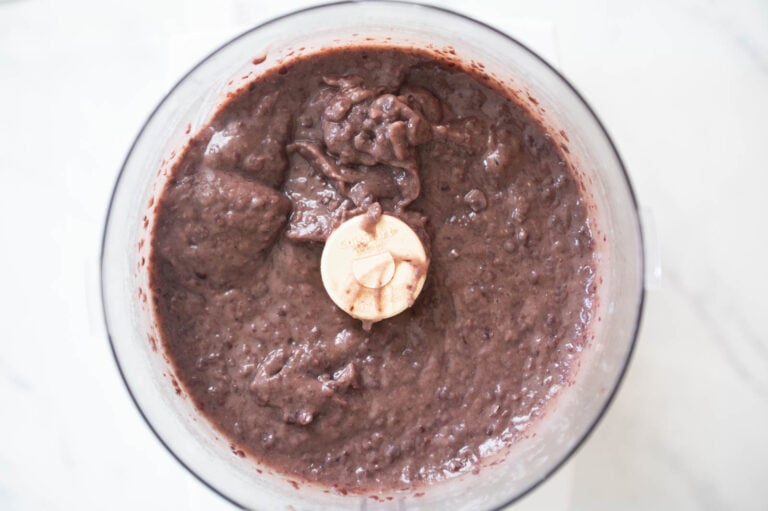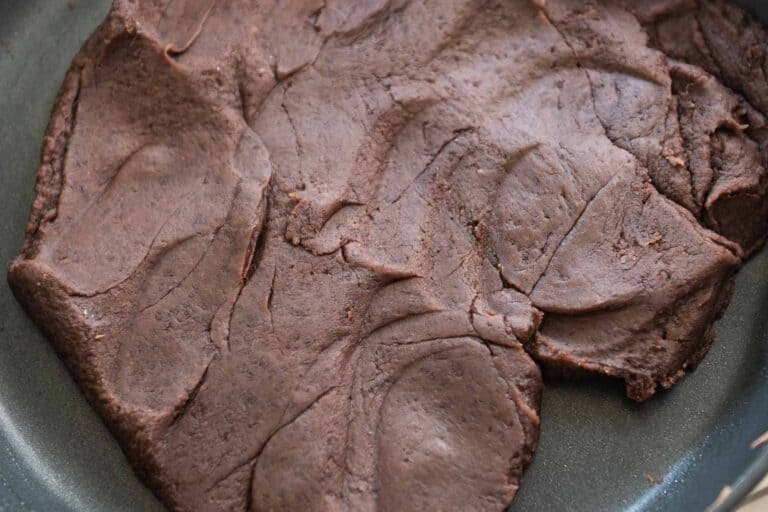Although many Asian cultures use red bean paste in their cooking, the flavor and texture of the paste can vary. For example, Japanese-style red bean paste, anko (餡子、あんこ), is generally made with azuki beans and sugar without any fat. However, Chinese-style red bean paste tends to include fat, such as lard, vegetable oil, peanut oil, etc. As a result, the bean paste is richer and more fragrant. In this red bean paste recipe, I’ll explain how to make a smooth Chinese-style red bean paste. If you’re looking for a chunky bean paste, see the notes in the recipe.
HOW TO MAKE SMOOTH RED BEAN PASTE
INGREDIENTS
Azuki Beans: To make red bean paste, you’ll need azuki beans, also known as adzuki beans or 紅豆 (“red bean” in Chinese). My mom tried making the bean paste with kidney beans and she said they didn’t work well because the beans left a slimy texture. Dark Brown Sugar: I’m using dark brown sugar to sweeten the bean paste because I like the malty flavor and the sugar deepens the color of the bean paste. Coconut sugar or plain sugar/caster sugar are suitable substitutes. Walnut & Coconut Oil: The purpose of adding oil to the bean paste is to make the paste more fragrant and smooth. I like using a combination of La Tourangelle’s roasted walnut oil and Trader Joe’s virgin coconut oil. These oils impart a nutty and pleasantly fragrant aroma to the bean paste. You can substitute any of these oils with any oils or butters you like. I sometimes use peanut oil or toasted hazelnut oil in place of the walnut oil. Kansui (Optional): My mom always adds a small amount of kansui (lye water, 鹼水) to deepen the color of the red bean paste. Notice how the bean paste on the left in the photo above, which contains kansui, looks darker than the paste on the right. Kansui also alters the taste of the paste ever so slightly. You can find kansui in Asian grocery stores. Feel free to leave it out if it’s difficult to obtain.
COOKING THE BEANS: NO-SOAK METHOD
Using the Instant Pot to cook the beans is the easiest and quickest method because you don’t need to soak the beans. Cook the beans on High Pressure for 22 minutes. Once the cooking stops, let the beans sit in the pot for another 25 minutes before releasing the residual pressure and draining the beans. Letting the beans sit in the hot water softens them further, resulting in beans that are easier to mash. I tried shortening the resting time to 15 minutes once, and I found quite a few beans were still firm at the core.
COOKING THE BEANS ON STOVETOP
If you don’t have an Instant Pot, soak the azuki beans overnight. Then, drain the beans and transfer them to a saucepan. Fill the saucepan with water until the water line is about 2 to 3 inches above the beans. Bring the water to boil. Reduce the heat to medium, and leave the lid slightly ajar to prevent the liquids from boiling over. Continue cooking the beans for another 45 minutes. Turn off the heat and leave the beans in the hot liquid for another 20 minutes. You want the beans to be very soft before blending into a puree. Drain the beans.
PRESS BEAN PUREE THROUGH MESH STRAINER
After draining the beans, transfer them to a food processor to blend until smooth. Because there isn’t enough liquid in the beans, they won’t mix properly in a high-speed blender. Once you blend the beans, I recommend pressing the puree through a mesh strainer to strain out some of the tougher skins (seed coat) of the azuki beans. Straining isn’t absolutely necessary but highly recommended if you want a smoother paste. You can even strain the puree twice if you like but it’s not necessary.
FINISH COOKING BEAN PASTE
To turn the bean puree into a thicker paste, you need to reduce the liquid by further cooking the puree in a pan. I highly recommend doing this in a nonstick pan to prevent the puree from sticking. I once tried cooking the paste in a Dutch oven and a layer of bean puree coated the bottom of the pot. I had to soak the pan for a long time and eventually cleaned everything with the help of Bar Keeper’s Friend (affiliate link). Heat a large nonstick sauté pan over medium heat. Add the walnut oil and swirl to coat the pan with the oil. Add the pureed beans and cook for 3 minutes, stirring frequently. If the puree is bubbling aggressively, reduce the heat slightly. Add the sugar to the pan and stir to combine with the beans. At this stage, the paste will be quite runny. Continue cooking the paste for another 10 to 12 minutes. Eventually, the paste will thicken so much that you can fold the paste with a flat spatula. The consistency of the paste will almost be like soft play-doh. Reduce the heat to low. Add the coconut oil to the pan. Use a flat spatula to fold the oil into the paste. Turn off the heat. I like adding the coconut oil at the end because I think the paste is more fragrant this way. Transfer the paste to a mixing bowl and let cool for 20 minutes before using. The red bean paste crusts easily, so cover the bowl with a damp towel.
HOW TO STORE RED BEAN PASTE
Refrigerate any unused red bean paste for up to a week. You can also freeze the paste in a freezer bag and use it within a few months. Make sure to remove as much air from the bag as possible before freezing.
